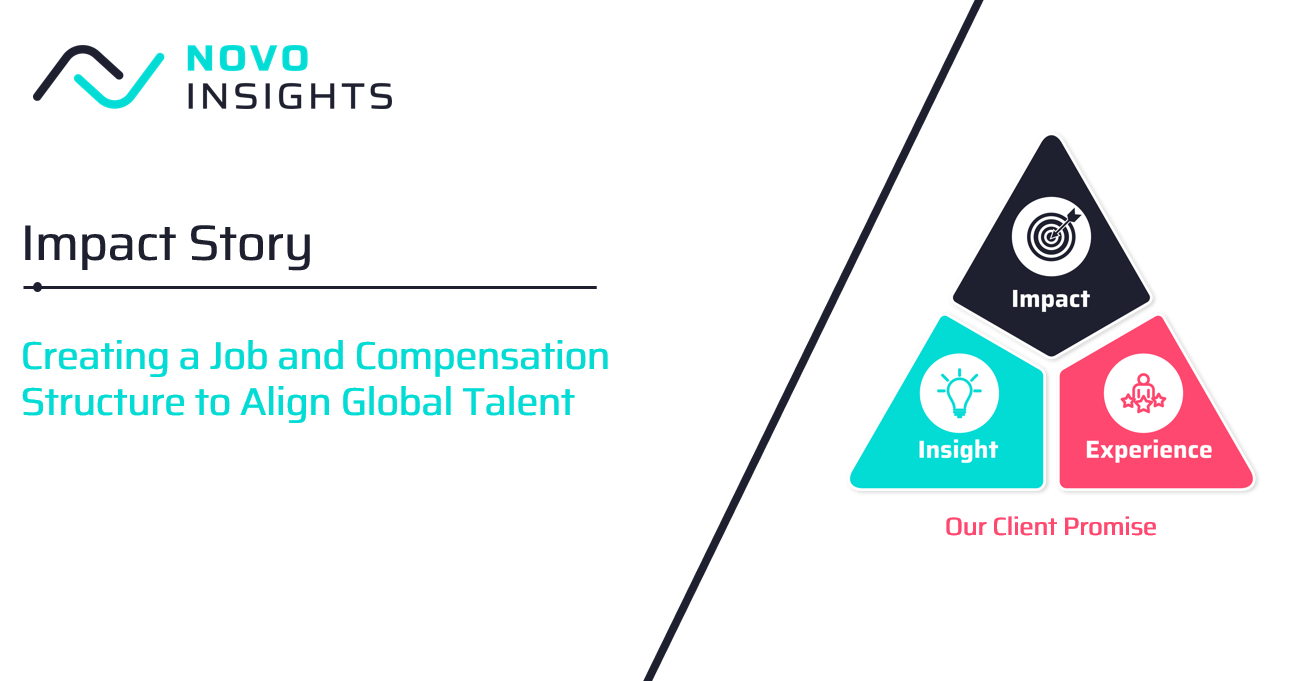In a rapidly evolving landscape, where job definitions often lack clarity, and organizations grapple with pay equity challenges, job architecture and compensation structure emerge as a strategic imperatives. Our recent collaboration with a Life Sciences client showcases a transformative journey from fragmented structures to a streamlined, transparent, and future-ready approach.
Industry: Life Sciences
Organization Size: 2,000 employees in >20 countries
Context: The Need for Job Architecture
In today's dynamic landscape, where ambiguity in role definitions, misalignment with market trends, and pay equity challenges abound, organizations are increasingly turning to their job architecture as a strategic lever for talent alignment. Empsight International and Deloitte's 2023 Global Job Architecture Practices Survey underscores this, with 41% of organizations actively revamping their programs. While drivers vary, common threads emerge: streamlining job structures and titles, enhancing career pathing and talent development, aligning pay programs, and facilitating workforce planning and HR reporting.
Operating without a defined framework leaves companies in an inefficient, reactive mode. Compensation teams, HRBPs, and recruiters find themselves entangled in endless loops with line managers deciphering job levels, content, and appropriate titles. This consumes more than half of a compensation team's time in transactional job evaluation and market pricing, which becomes a major problem for lean teams, where limited team resources have to juggle daily business support with supporting broader strategic HR agendas.
Challenge
Prior to our engagement, our client's aspirations for growth were hobbled by a fragmented job architecture. For nearly two full years, the organization attempted to align on a single job structure, but siloed approaches by business unit had resulted in inconsistent titling, pay structures, and job content. "One-off" titles catered to local talent needs but obfuscated career paths, further compounded by limited salary data specific to the client's niche within certain geographic markets. Recognizing these challenges, they initiated a job architecture project within a broader HR transformation, but execution lagged due to three key hindrances:
Organizational Silos
Job architecture efforts were confined to individual business units, neglecting a holistic view of job content, and required skills across the organization. Leaders' preferences diverged - some favoring single-track versus dual-track paths, others advocating for level-based titles or specific designations. This fragmented approach not only hindered consistency and scalability but also sowed ambiguity, inequity concerns, and stalled progress.
Short-Termism
The "Shiny Object Syndrome" led to demands for immediate job descriptions for each new role, sacrificing long-term goals and a coherent big picture. This reactive approach impeded progress on the broader program.
Competing Priorities
The HR Manager grappled with increasing market pricing requests and day-to-day compensation operations, juggling urgent business needs with the project's critical demands. Leadership, stretched thin by competing priorities, felt torn between supporting the initiative and addressing immediate operational pressures.
Solution
Through our strategic intervention and expertise in the Life Sciences industry, our team deployed a multi-pronged approach:
Unraveling Job Complexities
Through structured leader interviews and content analysis, we delved into the organization's structure, nature of work, and desired levels within job families. This deep dive illuminated leaders' aspirations for career paths, titles, and skill transferability within the organization.
Consolidation and Standardization
Analysis revealed redundancies and unnecessary complexity. We consolidated roles with similar skillsets and established global levels, fostering transparency and mobility.
Data-Driven Market Pricing
With limited niche-specific data, we leveraged industry-specific survey sources and made sense of often volatile market data. This informed the design of competitive salary structures aligned with the client's compensation philosophy.
Implementation Toolkit
We equipped the client with a career framework, job title glossary, leveling guide, salary structures, job match guide, market analysis, and cost impact assessment.
Key Insights
Fresh Perspective: Faced with persistent roadblocks stemming from entrenched competing priorities, the client recognized the need for fresh expertise to navigate the project's complexities. Engaging us provided a vital outside perspective and strategic intervention. Through proactive stakeholder engagement and tailored leadership communication, we secured sustained commitment and buy-in.
Clarity of Scope: Our intervention shifted the focus from creating individual job descriptions to designing a robust job architecture, the very foundation for optimal talent management. We believe requiring job documentation as part of the job architecture effort is a time trap that inhibits progress. In an era of Generative AI, job descriptions can be created efficiently as a fast follow-up to the broader architecture effort.
Don't Re-Invent: Recognizing the mounting frustrations surrounding the project timeline before our engagement, we opted to maintain established terminology from the prior effort to minimize onboarding challenges for leadership and facilitate seamless communication and easier adoption of the model.
Alignment with Flexibility: To navigate the diverse preferences across career track models and title structures, we facilitated collaborative workshops with leaders and the compensation team to identify common ground and develop a unified framework that accommodates varied aspirations while ensuring clarity, fairness, and a seamless path for employee progression.
Narrower, Overlapping Ranges: For salary structures, we introduced a grade-based salary structure with smaller progression than many traditional structures, enabling market alignment and empowering HR to attract and retain top talent with greater precision.
Built for Change: The job and compensation architecture is an ongoing journey, not a destination. With our robust framework and collaborative approach, we have empowered our client to adapt to future challenges and maintain a competitive edge in the ever-evolving talent landscape.

